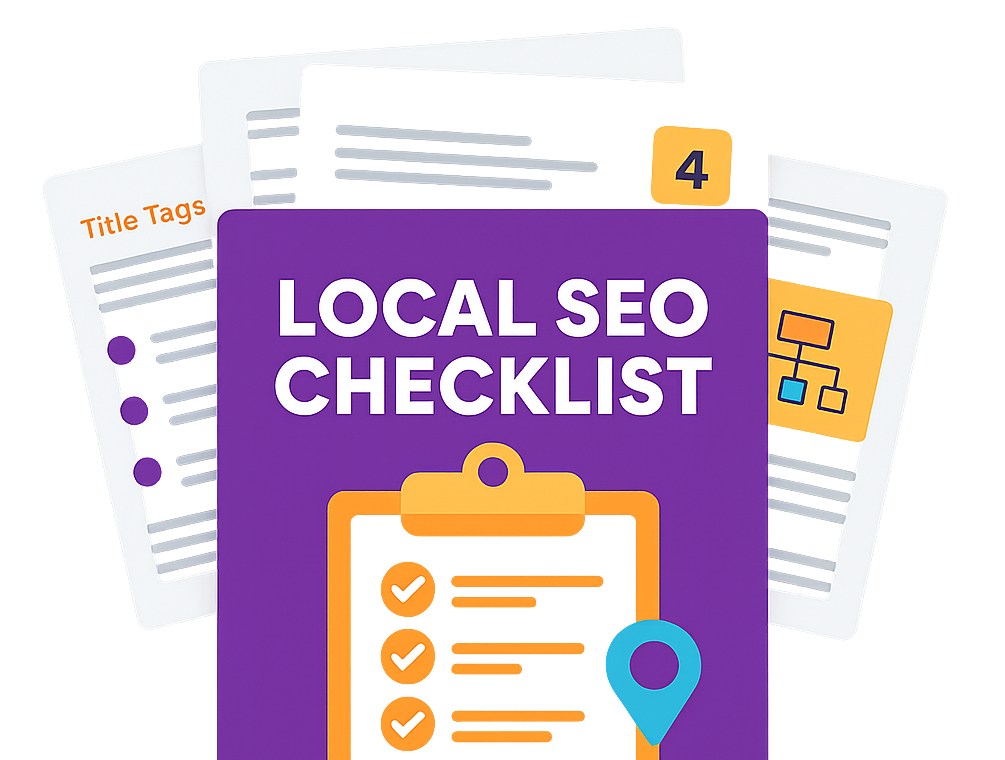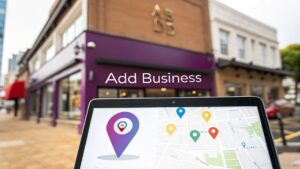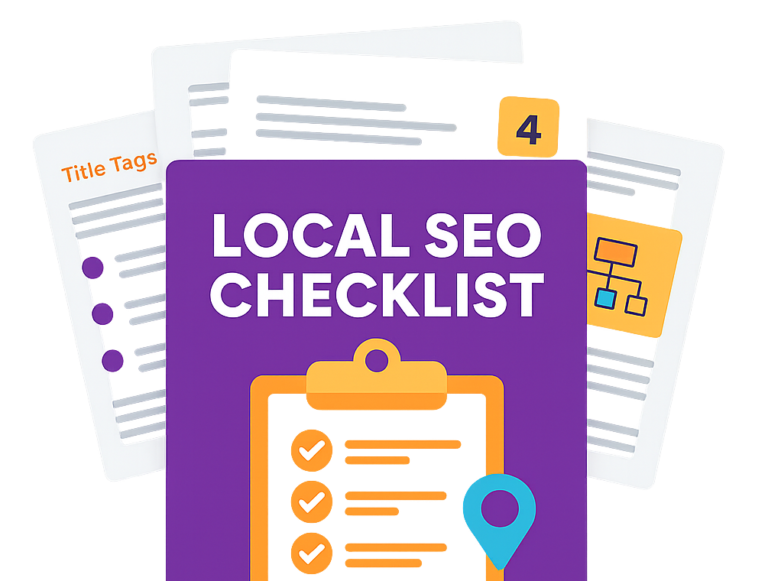At its heart, search intent is simply the 'why' behind every search. It’s the primary goal someone has when they type a query into a search engine, revealing whether they want to learn something, find a specific website, or buy a product.
Understanding the 'Why' Behind Every Search

Think of search intent like understanding a customer who has just walked into your shop. Are they just browsing, comparing prices, or do they have their wallet out, ready to buy? Figuring this out is the cornerstone of any effective SEO strategy because it tells you exactly what kind of content you need to create.
Google’s main job is to give people the most helpful and relevant results for their queries. To pull this off, its algorithms have become incredibly good at interpreting the real goal behind the words people type. So, if you want your website to rank, your content has to perfectly match what that person is trying to achieve.
The Foundation of Content Strategy
Creating content that doesn't align with user intent is like trying to sell a car to someone who just asked for directions. It simply doesn't work. For your content to hit the mark, you have to diagnose the user's main goal first. This means shifting your mindset:
- Move beyond just keywords: Instead of only targeting words, target the problems and questions those words represent.
- Prioritise user satisfaction: Your pages must provide a complete and satisfying answer to the user's query.
- Analyse what’s already working: The top-ranking pages for a keyword are Google’s current best guess for what satisfies user intent.
This focus on user goals is central to modern SEO and a key part of how we approach keyword research for your website.
What UK Search Data Reveals
Understanding search intent is especially important when you look at how people in the UK use search engines. Recent data shows that a huge majority of Google searches—over 60%—are informational. This 60.5% figure easily outpaces transactional searches (26.4%) and navigational ones (13.1%), proving that UK users mostly turn to Google to learn and satisfy their curiosity.
In essence, search intent isn't just another SEO buzzword; it is the fundamental principle that connects your content to a real human need. Mastering it is the first step towards creating a website that both Google and your audience will love.
The Four Core Types of Search Intent
To really get a handle on what is search intent, we need to break it down into four main categories. Think of each type as a different mindset—a unique stage in a person's journey, from just being curious to being ready to pull the trigger. Nailing these down is a critical SEO skill that lets you create content that actually helps your audience.
This infographic gives you a quick visual summary of the four intents, using icons to represent learning, navigating, comparing, and buying.
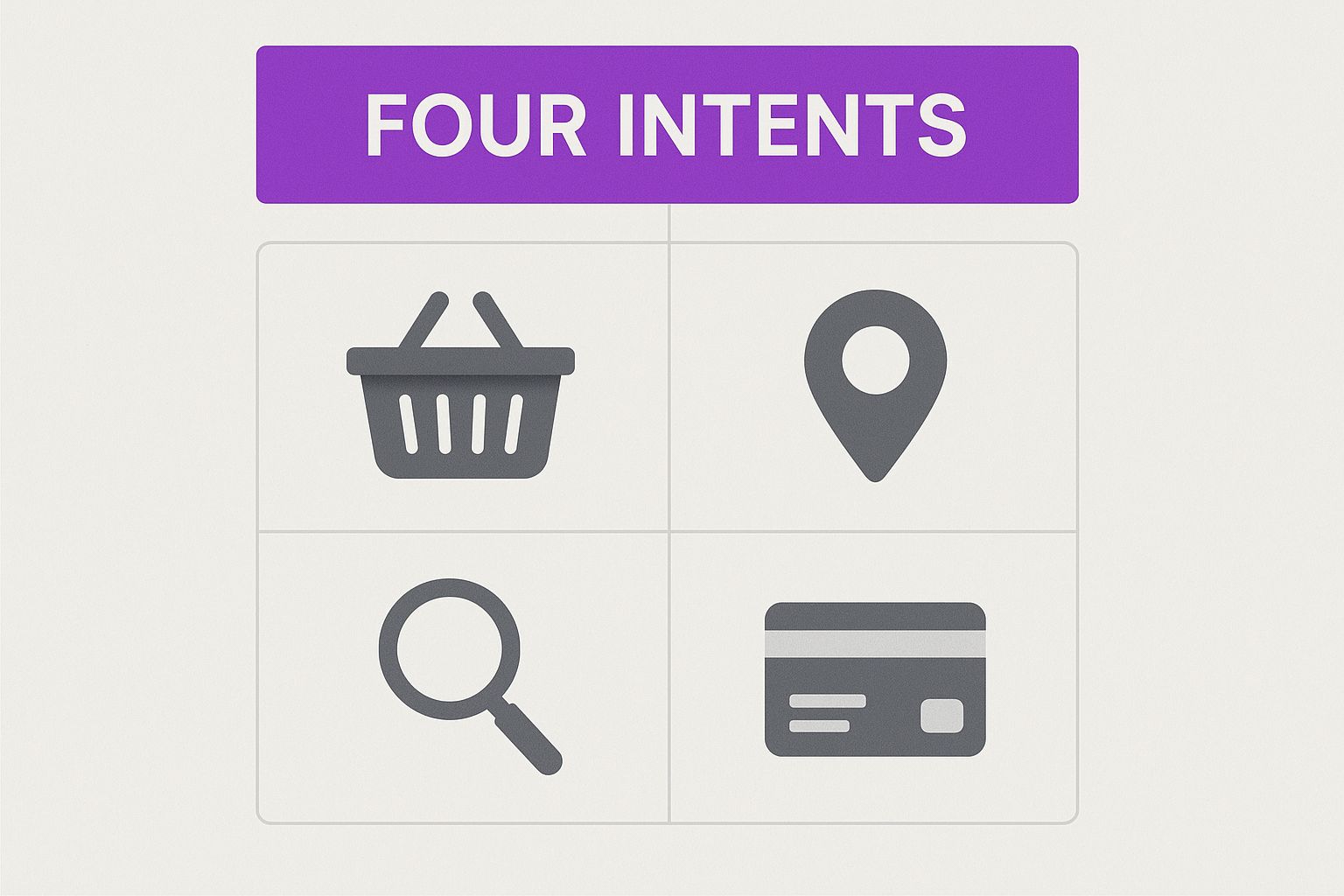
It’s a simple way to picture the "why" behind every search. Now, let’s unpack each one with some practical, UK-based examples to make it all click.
1 Informational Intent The Need to Know
This is the big one—the most common reason people use a search engine. When someone has informational intent, they’re hunting for knowledge. They want answers, facts, or instructions, but they’re not looking to buy anything just yet. Their main goal is simply to learn.
These searches are full of question words like "what," "how," "why," or "where." Someone might search for 'how to make a Victoria sponge' or 'what is the capital of Scotland'. They’re looking for a straight, comprehensive answer, and the best way to give it to them is with detailed content.
To target this intent, you should be creating:
- In-depth blog posts that tackle specific questions head-on.
- Step-by-step guides or clear tutorials.
- Educational articles that break down complex topics.
By providing clear, valuable answers, you build trust and position your brand as an authority. That makes people far more likely to come back to you when they need something else.
2 Navigational Intent The Need to Go
Navigational intent is much more straightforward. The user already knows exactly where they want to go online; they’re just using the search engine as a handy shortcut to get there. They’re looking for a specific website, brand, or page they already have in mind.
A classic example is typing 'BBC News' into Google instead of bothering with the full URL in the address bar. Other common ones include 'Royal Mail login' or 'Tesco opening times'. The goal here is crystal clear: get to a specific destination.
For your own business, ranking for your brand name is a must. When someone searches for your company, they have a clear navigational intent, and you absolutely have to be the top result to meet their expectation.
This is usually the easiest intent to satisfy, as long as you have a decent website and a unique brand name. There's no guesswork here—the user wants you, so you just need to show up.
3 Commercial Investigation The Need to Compare
This intent is the middle ground between learning something and buying something. The user is deep in research mode, but they have a definite plan to make a purchase soon. They're busy comparing products, services, or brands to figure out the best option for them.
Keywords for commercial investigation are often peppered with comparative words like 'best,' 'review,' 'vs,' or 'top'. A search for 'best electric cars UK' or 'Samsung vs iPhone camera review' is a massive signal that the user is weighing up their choices. They need detailed comparisons, expert opinions, and real user reviews to help them decide.
Content that nails this intent includes:
- Detailed product reviews that are honest and genuinely helpful.
- Comparison articles that pit different options against each other.
- 'Best of' listicles that curate the top choices in a particular category.
If you don't provide this kind of comparative content, you’re missing a huge opportunity to influence a potential customer right when they're making their decision.
4 Transactional Intent The Need to Do
And finally, we have transactional intent. This is where the action happens. The user has done their homework, made a decision, and is now ready to buy, sign up, or download something.
These keywords are incredibly valuable because they’re used by people at the very end of their journey. You’ll see action-oriented words like 'buy,' 'deal,' 'discount,' or 'for sale.' Think 'buy Le Creuset baking tin' or 'cheap flights to Spain'. The user’s goal is to complete a transaction, right now.
To capture this intent, you must have perfectly optimised:
- Product pages with clear pricing and unmissable 'add to basket' buttons.
- Service pages with simple, straightforward sign-up forms.
- Landing pages for specific offers or discounts.
For these queries, the user experience has to be seamless. Any friction or confusion could make them leave. When you successfully match this intent, it leads directly to conversions and revenue.
Why Search Intent Is the Heart of Modern SEO
Knowing the different types of intent is step one, but the real magic happens when you connect that theory to actual results. Aligning your content with what people are searching for isn't just a "nice-to-have"—it's the absolute bedrock of modern SEO. The old days of just cramming keywords onto a page and hoping for the best are long gone.
Today, Google's algorithms are laser-focused on one thing above all else: user satisfaction. The search engine’s entire purpose is to deliver the most helpful, relevant, and satisfying answer it can find. When your page perfectly matches a searcher's needs, Google rewards you with better rankings because you're helping it do its job. Understanding this is everything, as it’s one of the most critical search engine ranking factors shaping your visibility online.
The Tangible Benefits of Matching Intent
When you nail search intent, the positive effects ripple across all your key metrics. It’s not just about ranking higher; it's about pulling in the right audience—people who are genuinely looking for what you offer. This alignment translates directly into better on-page engagement, which sends powerful signals to Google that your content is a top-quality result.
The main benefits speak for themselves:
- Lower Bounce Rates: Visitors land on your page, find exactly what they wanted, and see no reason to hit the 'back' button.
- Longer Dwell Times: When your content truly satisfies a query, people stick around longer to read, watch, or interact with it.
- Higher Conversion Rates: By matching transactional intent with product pages or commercial intent with helpful reviews, you create a natural path for users to make a purchase.
This user-first thinking is also central to newer concepts like Answer Engine Optimisation, where giving direct, clear answers is the name of the game.
A Tale of Two Businesses
To see this play out, let’s imagine two online bakeries in Cambridge, both trying to rank for "how to bake sourdough bread."
Bakery A builds a detailed blog post complete with a step-by-step recipe, troubleshooting tips for common mistakes, and even a video tutorial. They've perfectly matched the informational intent, delivering immense value to someone who wants to learn.
Bakery B sends people searching for that same keyword to their main product page selling sourdough loaves. The page looks great, but it completely misses the point. The searcher wanted to learn how to bake, not buy a loaf of bread.
It's no surprise that Bakery A will climb the rankings for this query. Its content actually helps the user, which leads to longer visits and more people sharing the link. Meanwhile, Bakery B will suffer from high bounce rates as visitors quickly realise the page doesn't answer their question. This tells Google that Bakery B is not a good result for this search, and its ranking will inevitably drop.
This simple example shows why putting the user first isn’t just good for your audience—it’s the only way to win at SEO for the long haul.
How to Uncover the Intent Behind Any Keyword
Knowing the theory is one thing, but putting it into practice is where you really start to understand what search intent is. The best way to figure out the why behind any keyword is to look at the clues Google is already giving you.
Think of the Search Engine Results Page (SERP) as a treasure map. Every feature on it—from the top-ranking pages to special snippets—is a signal pointing directly to what users are trying to achieve. Analysing the SERP is your most reliable method because it reveals what Google’s algorithms have already determined is the best answer for a query.
The pages ranking at the top aren't there by accident. They are Google's current best guess for satisfying that user. By studying them, you can reverse-engineer the dominant intent and build content that lines up perfectly.
Analyse the Top Ranking Content
Kick things off with a simple search for your target keyword. Take a close look at the top 5-10 organic results. What kind of pages are showing up? This is your first and most powerful clue.
- Blog Posts & 'How-To' Guides: If the results are packed with articles, tutorials, and in-depth guides, the intent is overwhelmingly informational. People want to learn, not buy.
- Product or Service Pages: Seeing e-commerce product pages or pages from service-based businesses? The intent is leaning heavily towards transactional. Users are getting ready to make a purchase.
- Comparison Articles & Reviews: When you spot 'best of' lists, 'vs' articles, or detailed reviews, you're looking at commercial investigation intent. Searchers are weighing up their options before they pull the trigger.
Of course, effectively uncovering intent begins with smart keyword selection. To really get this right, you have to understand how to find the best keywords for SEO by making user intent the heart of your research from day one.
Look for Special SERP Features
Beyond the standard blue links, Google populates the SERP with all sorts of features that give you clear hints about what searchers want. These are direct signs of the primary intent behind a search.
For instance, this is a typical result for an informational or navigational query, linking straight to an authoritative blog.
The fact that Google shows a direct link to a blog tells you it has identified the user's need for detailed, expert information on the topic.
You can learn a lot just by looking at what else appears on the page. Paying attention to these SERP features is like getting insider information on what your audience is really looking for.
SERP Clues for Identifying Search Intent
| SERP Feature | Likely Search Intent | What It Signals |
|---|---|---|
| People Also Ask Box | Informational | Searchers have follow-up questions and want comprehensive answers. |
| Image Packs/Video Carousels | Informational | The topic is visual, and users need to see instructions or examples. |
| Shopping Ads/Product Carousels | Commercial / Transactional | The searcher is in a buying mindset and ready to see products. |
| Local Map Pack | Local Transactional | The user is looking for a nearby business to visit, call, or buy from. |
People Also Ask (PAA) Box: This feature is a strong indicator of informational intent. It shows that users have follow-up questions and are looking for comprehensive answers on a topic.
By methodically analysing these clues on the SERP, you take all the guesswork out of the process. You're no longer just guessing what people want; you're seeing what Google already knows they want.
This data-driven approach allows you to make much smarter decisions about how to choose keywords for your website and, ultimately, create content that truly resonates with your audience.
Matching Your Content to Each Intent Type
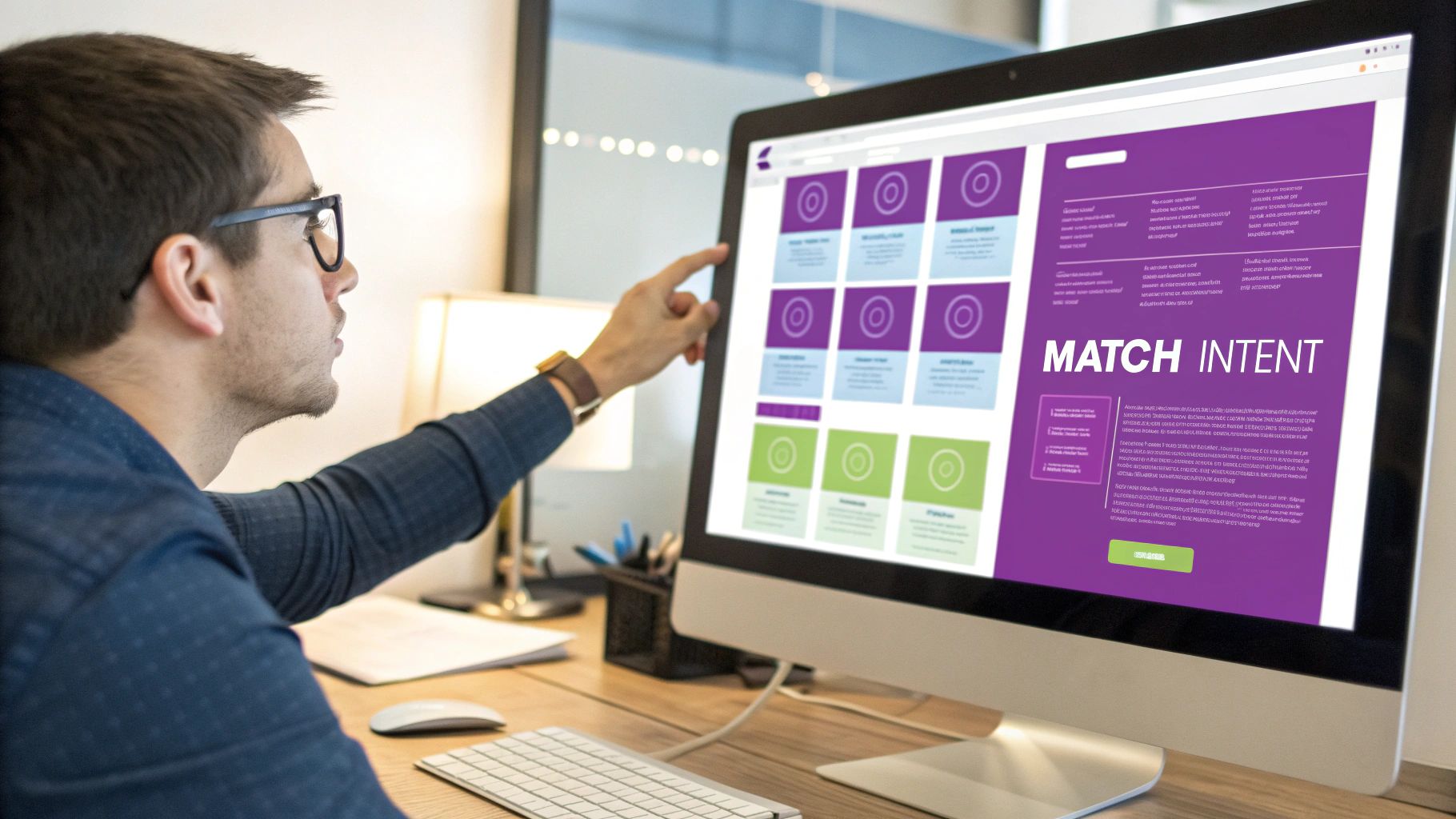
Once you’ve got a handle on the intent behind a keyword, the real work begins: creating content that actually answers the user's question. This goes way beyond just sprinkling in a few keywords. We're talking about building the right kind of page, with the right format, tone, and on-page elements to match what the searcher is looking for.
Getting this alignment right is non-negotiable if you want to rank. Google’s whole game is about rewarding pages that give people a good experience. A mismatch between what someone wants and what your page offers is one of the fastest ways to send your bounce rate through the roof and signal that your content just isn't cutting it.
Simply put, each type of intent demands a completely different approach. An informational query needs a deep-dive guide, whereas a transactional one needs a clear, smooth path to the checkout.
Creating Content for Informational Intent
When someone is in learning mode, they're on the hunt for comprehensive, trustworthy answers. Your job is to become their go-to source by providing information that's clear, well-organised, and genuinely helpful.
Don't just scratch the surface. The best informational content thinks one step ahead, answering the follow-up questions a user might have before they even think to ask them. This is how you really establish your expertise.
The best formats for this kind of intent include:
- In-depth blog posts that explore a topic from every possible angle.
- Step-by-step guides that walk people through a process with crystal-clear instructions.
- Tutorial videos to visually show how something is done.
- Downloadable resources like checklists or e-books that provide that little bit of extra value.
This is also where structuring your content for both humans and search engines is absolutely vital. We're seeing a steady rise in zero-click searches, where users get their answers right on the search results page. In the UK and EU, these searches jumped from 23.6% in March 2024 to 26.1% by March 2025. That tells us that clear, direct answers are crucial for getting seen.
Building Pages for Commercial and Transactional Intent
For commercial and transactional searches, the user’s mindset shifts from learning to buying. Your content needs to make that shift too, moving from educating to persuading and making the sale easy.
With commercial intent, users are weighing up their options. They need content that helps them make a smart choice, and this is your chance to guide them with advice they can trust.
The top formats for commercial investigation are:
- Detailed comparison articles that pit different products or services head-to-head.
- "Best of" listicles that curate the top choices in a particular category.
- In-depth product reviews that offer unbiased insights and real-world testing.
When the intent becomes transactional, the user is ready to pull the trigger. Your job is to remove every obstacle and make the next step completely obvious. Every single element on the page should be laser-focused on encouraging that conversion.
For transactional queries, the user experience is paramount. A clunky checkout process or a confusing layout can instantly lose you a sale, no matter how good your product is.
To get these pages right, focus on:
- High-quality product images and clear, benefit-led descriptions.
- Prominent calls-to-action (CTAs) like "Add to Basket" or "Buy Now".
- Transparent pricing, shipping info, and customer reviews to build confidence.
Successfully lining up your content with each intent type is a cornerstone of any winning SEO plan. To see how this fits into the bigger picture, take a look at our guide on how to create a content strategy.
Common Questions About Search Intent
To wrap things up, let's go over some of the most common questions that pop up around search intent. Nailing these points will help you put everything you've learned into practice and build an SEO strategy that actually works.
Can a Single Keyword Have More Than One Search Intent?
Absolutely. This happens all the time and is what we call mixed intent.
Think about a query like "London hotels". For one person, it’s commercial – they’re just researching their options. For someone else, it's transactional – they’ve got their credit card out and are ready to book a room this minute.
When a query is ambiguous like this, Google often plays it safe by showing a mixed bag of results. You might see a few blog posts, a couple of booking sites, and maybe even a map. Your job is to look at the search results page and figure out which intent seems to be the most dominant. Then, create content that serves that primary need better than anyone else.
How Does Search Intent Affect Content Marketing?
Search intent should be the absolute cornerstone of your content marketing. Instead of blindly creating content to rank for a keyword, you should be creating it to solve the problem behind the keyword.
This alignment is what turns casual search traffic into real business results.
It's a fundamental shift from a keyword-first to a user-first mindset. You'll focus on creating helpful informational blog posts for 'how-to' searches, detailed comparison guides for 'best of' queries, and perfectly optimised service pages for 'near me' searches.
How Often Should I Review the Intent for My Keywords?
Search intent isn't set in stone. It can shift as markets change, new products emerge, or people's behaviours evolve over time. It's a good idea to review the search results for your most important keywords at least every 6-12 months.
A keyword that was once purely informational might slowly become more transactional. By staying on top of these subtle changes, you can adapt your content, hold onto your rankings, and keep giving users exactly what they’re looking for.
At Bare Digital, we build our SEO strategies around a deep understanding of your audience's intent. If you're ready to create content that connects with customers and drives real growth, get in touch with us. Find out how we can help your business by visiting us at https://www.bare-digital.com.


